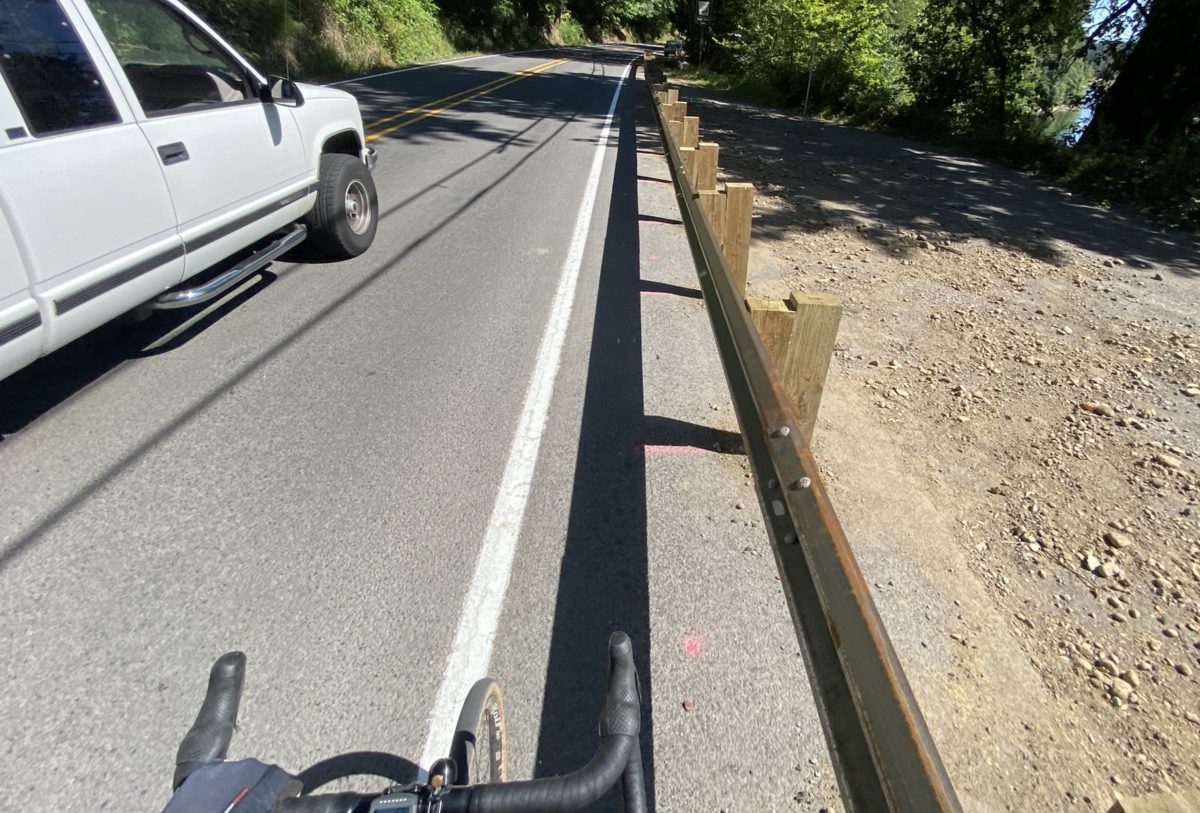
(Photo: J. Maus/BikePortland)
Late last month the Oregon Department of Transportation installed several thousand feet of guardrails in the paved shoulder of the Historic Columbia River Highway (U.S Route 30). The new rails, located just outside Troutdale along the Sandy River, were meant to keep people from parking and camping in undeveloped turnouts.
Unfortunately the rails had a significant and negative impact on bicycle users because they were installed too far into the shoulder. This route is an extremely popular and important part of many cycling routes. After we pointed this out, ODOT’s regional director Rian Windsheimer acknowledged that was the “wrong decision.” He said the rails were meant to be installed further away from the shoulder, but work crews realized there was a gas line underground and made a spur-of-the-moment decision to move the railing toward the travel lanes. Windsheimer also said two of the three sections of rails would be removed.
I was curious about how the removal work went and wanted to see which section of railings remained. So on Monday I rolled out for a test ride and a closer look. What I saw was disappointing: The remaining guardrails are still dangerous and the removed ones have left behind a pock-marked shoulder full of gravel.
Here are photos of the section that remains:




(Photos: J. Maus/BikePortland)

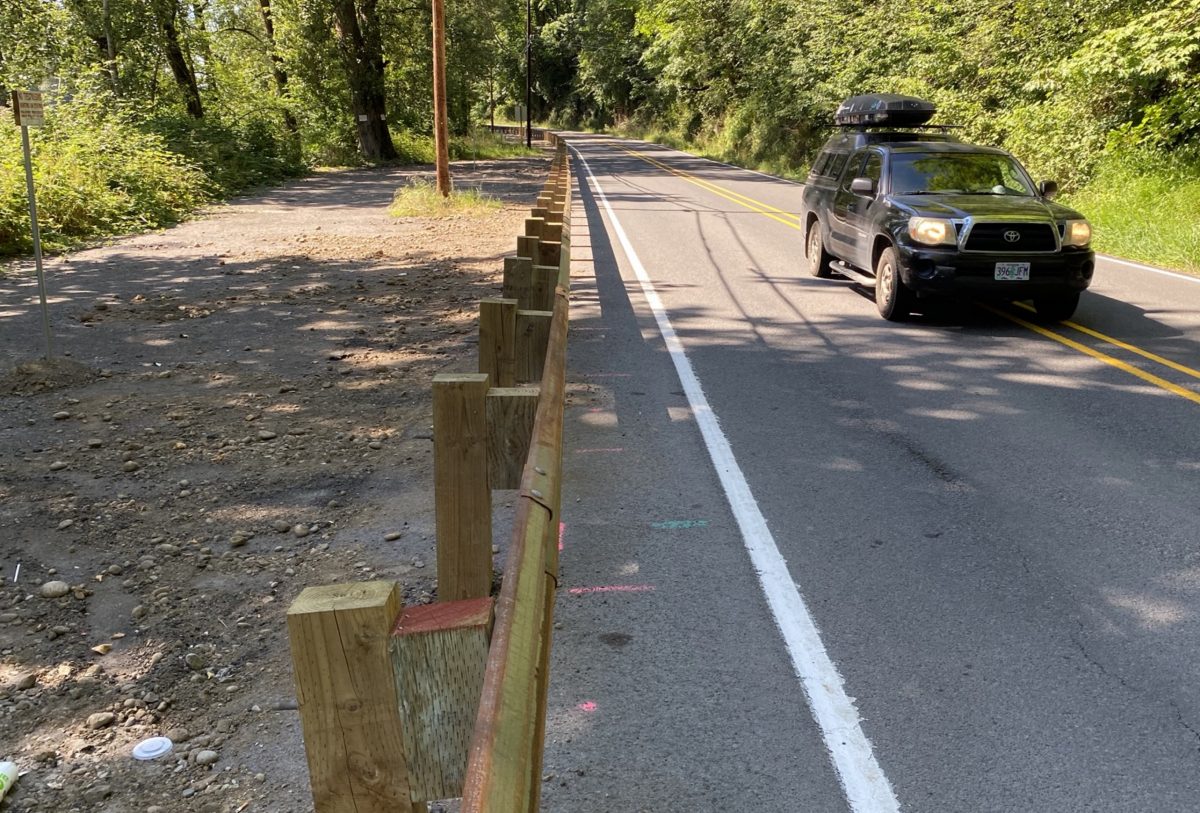
(Photo: J. Maus/BikePortland)
Windsheimer’s statement made it seem like he had ordered staff to rectify the situation. I assumed that meant the section left in the ground would be relatively innocuous; but I was wrong. The section that remains, just north of Tad’s Chicken ‘n Dumplings where the official Columbia River Gorge Scenic Byway begins, reduces the space for cycling and creates a hazard. The guardrail juts into the paved shoulder and it forced me to ride directly on the fog line instead of comfortably inside of it. The width of the remaining shoulder is only about three-feet wide for most of the 1,000-foot railing section. Add a shy distance (space needed to have breathing room away from the railing) and I was left with only 1-2 feet of usable space.
Advertisement
That width is substandard even by ODOT’s own published design guidelines. ODOT’s Bicycle & Pedestrian Design Guide (PDF) recommends a width of five or six feet. “Shoulders adjacent to a guardrail or other roadside barriers must be 5 feet wide, as cyclists will ‘shy’ away from a vertical face,” the guide states. A chart in the guide says rural arterials with over 400 cars per day should have shoulder widths of at least six feet.

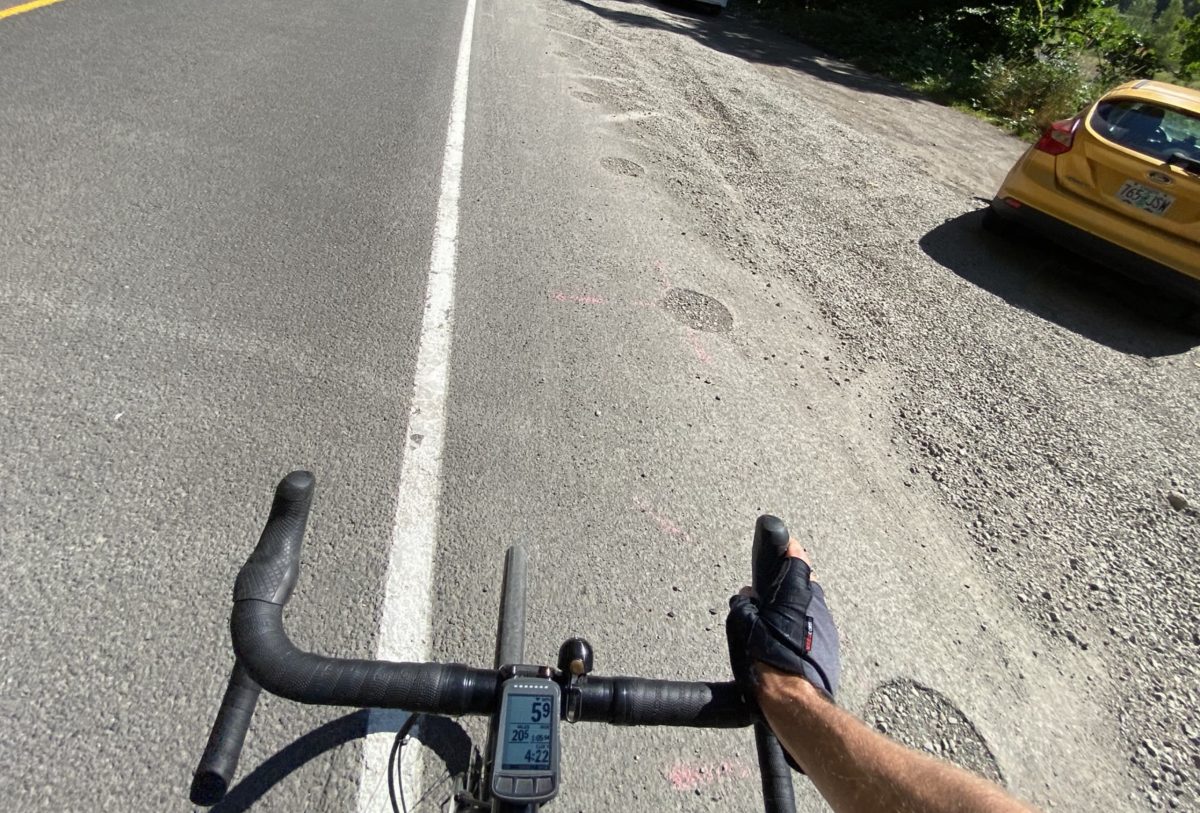
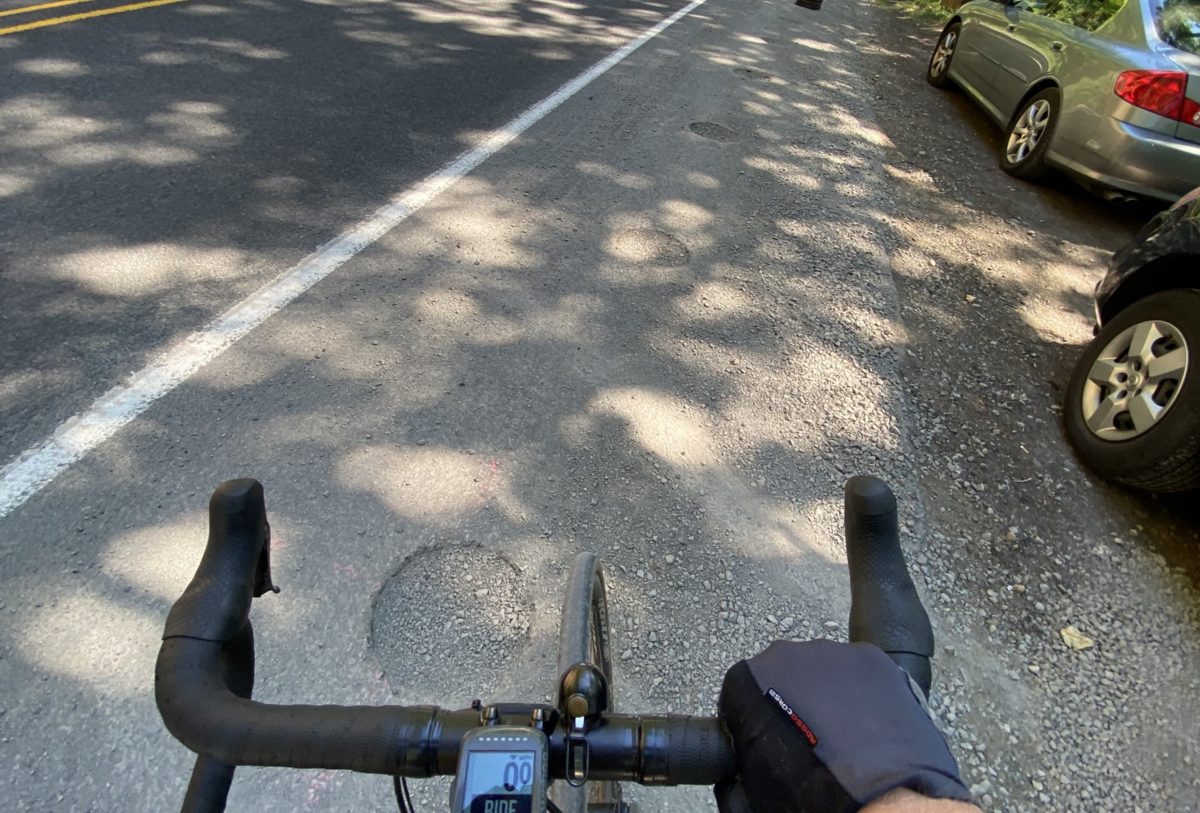
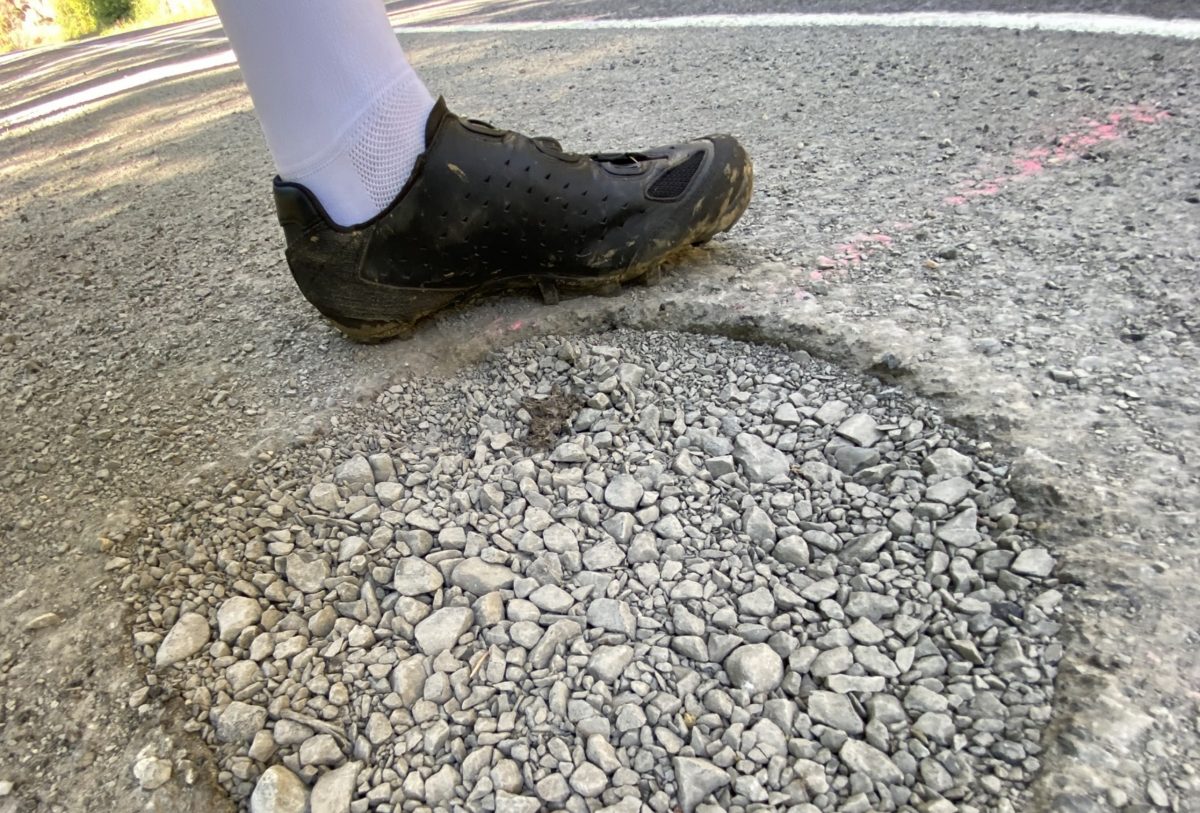
As for the sections that have been removed, ODOT has not cleaned up after themselves very well. Dozens of holes where the guardrail posts once stood are now filled with gravel. The gravel is spread all over the shoulder and the holes have created bumps. These holes mean that bicycle riders have to choose between running over them (which could cause a crash) or riding to the left of them — which puts them right back near the fog line just like the guardrails themselves once did!
This entire episode is frustrating and should have never happened. I’m hopeful ODOT will return to do a better clean-up job and that they will remove the remaining section of guardrail. Stay tuned.
— Jonathan Maus: (503) 706-8804, @jonathan_maus on Twitter and jonathan@bikeportland.org
— Get our headlines delivered to your inbox.
— Support this independent community media outlet with a one-time contribution or monthly subscription.


